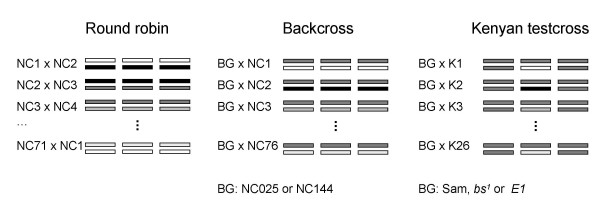Figure 1.
Schema of the three experimental crosses. (A) In the round robin (RR), each of 71 inbred lines from NC was crossed to six other lines to produce heterozygous offspring. Six loops of the type shown were used. (B) In the Backcross (BC), each of 76 NC lines were crossed to two phenotypically divergent backgrounds, NC025 and NC144, again resulting in heterozygous offspring. (C) Each of 26 Kenyan second chromosomes extracted into the Samarkand background were crossed to regular Samarkand or Samarkand lines carrying blistered1 or EgfrEllipse mutations.

